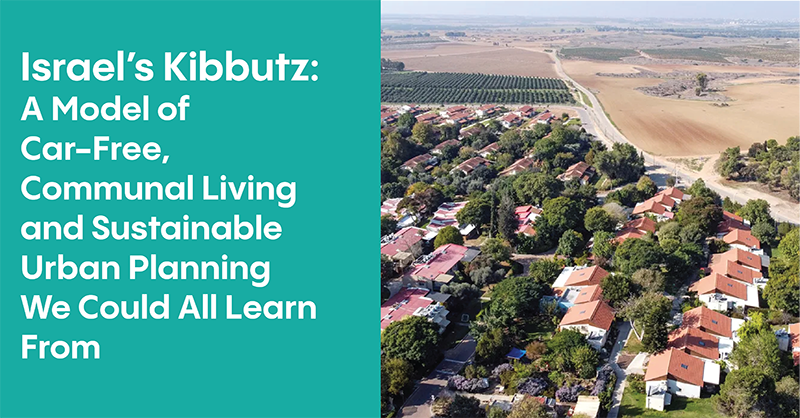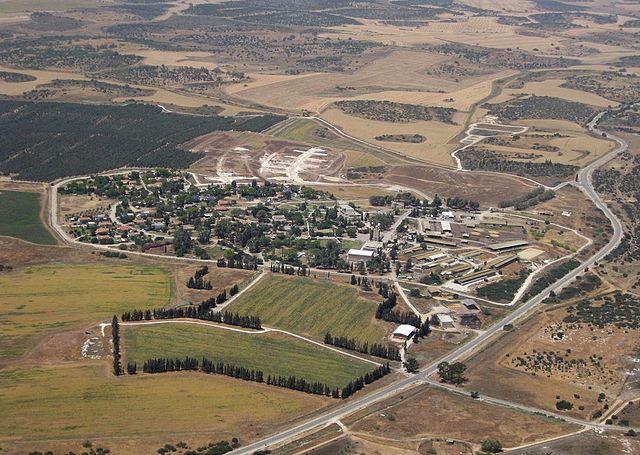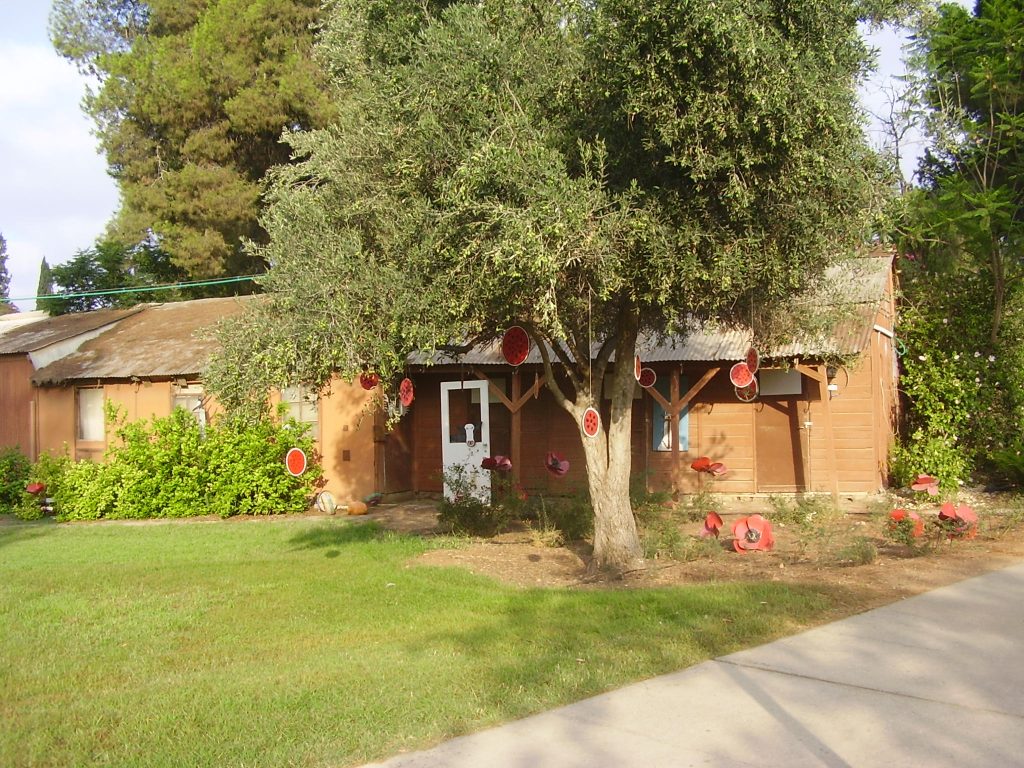Small communities called Kibbutzim faced atrocities during the attack by the terrorist organization Hamas on October 7, 2023.
The Kibuzt is a peaceful, agricultural community, where resources are shared, not privately-owned, and decision-making is collective.
All of the Kibbuztim are located within the pre-1967 border, recognized by the international community as the State of Israel.
Here’s more about this one-of-a-kind communal model:

The kibbutz is a uniquely Israeli phenomenon with a significant cultural legacy and an important role in the nation’s history. But from urban and rural planning perspectives, it is a unique, one of a kind, model.
In the heart of Israel, amidst the vibrant blend of ancient history and modern innovation, lies a unique social and urban experiment known as the Kibbutz. Founded in the early 20th century, these communal settlements have not only shaped the nation’s social fabric but also introduced innovative urban and rural planning principles that promote sustainability, community living, and a car-free, pedestrian-friendly environment. In this blog post, we will explore the essence of a Kibbutz, its urban planning principles, and the factors that make it a haven for those who seek a harmonious, sustainable way of life, far from the city.
What is a Kibbutz?
A Kibbutz is a collective community in Israel that embodies principles of socialism, egalitarianism, and self-sufficiency. The term ‘kibbutz’ is derived from the Hebrew word “kibbutzim,” meaning “gathering” or “group.” These intentional communities have their roots in the early 20th century, as Jewish pioneers sought to create a new way of life in the land of Israel. Kibbutzim were established as agricultural communities, where resources were shared, and decision-making was collective. Over time, they evolved to include various industries such as manufacturing, technology, and services.

Urban Planning Principles of a Kibbutz
The design and layout of a Kibbutz reflect its core principles of communal living and sustainability. Here are some key urban planning elements that define a Kibbutz:
- Central Hub: Kibbutzim are typically organized around a central hub, which includes communal facilities such as dining halls, schools, and healthcare centers. This design encourages social interaction and fosters a sense of togetherness.
- Collective Agriculture: Originally, agriculture was the primary economic activity in Kibbutzim. Fields, orchards, and livestock areas were located close to the residential areas, making it easier for residents to participate in farming activities.
- Minimal Private Property: Kibbutzim traditionally had limited private property. Most housing was provided by the community, and personal possessions were shared among residents. This design promotes social equality and reduces materialistic pursuits.
- Sustainability: Kibbutzim have a long history of embracing sustainability. They often incorporate renewable energy sources, water recycling systems, and organic farming practices to reduce their environmental impact.
One of the most striking features of a Kibbutz is its commitment to creating a car-free and pedestrian-friendly environment. Here's how they achieve this:


- Limited Vehicle Access: Many Kibbutzim restrict vehicle access to the communal areas. Residents park their cars at the outskirts, reducing noise and pollution within the community.
- Walking and Cycling Paths: Kibbutzim have well-maintained walking and cycling paths that connect residential areas with communal spaces, schools, and workplaces. This encourages residents to walk or cycle for daily commuting.
- Public Transportation: To further reduce the reliance on private cars, Kibbutzim often provide efficient public (privately-tun) transportation systems, connecting them to nearby towns and cities.
- Urban Green Spaces: Kibbutzim are known for their lush greenery, with parks, gardens, and open spaces integrated into urban planning. This not only beautifies the environment in Israel warm climate, but also promotes walking and outdoor activities.
The Kibbutz is a remarkable model of communal living and sustainable urban planning that has stood the test of time. Its emphasis on equality, environmental stewardship, and a car-free, pedestrian-friendly environment resonates with those seeking a harmonious, community-oriented way of life. While Kibbutzim have evolved over the years, they continue to inspire us with their innovative approach to social and urban development. These intentional communities provide valuable lessons on how to foster a sense of community while also caring for the environment.
